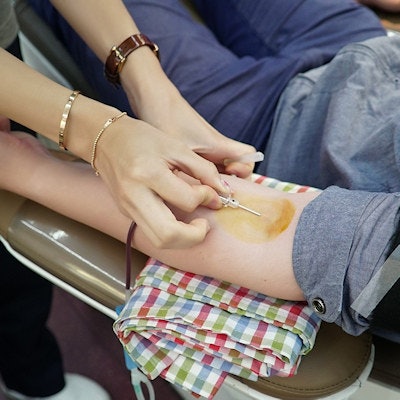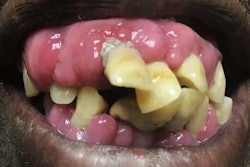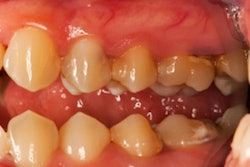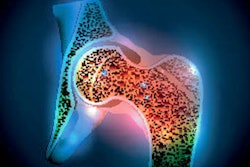
People who have periodontitis and give blood may be at risk of contaminating donations with bacteria, making transfusion patients more vulnerable to hospital infections, according to a study published on February 2 in Blood Transfusion.
Researchers found that the prevalence of bacteria was 6.4 times higher in blood donated by people with periodontitis compared to those who didn't experience severe gum inflammation. Additionally, bacteria originating from the oral cavity evade BacT/Alert, the routine test that aims to detect growing germs that may cause transfusion-transmitted infections (TTIs) in blood donations, the authors wrote.
"Blood donors with periodontitis are considerably more likely to donate blood contaminated with bacteria, and routine screening of platelets using BacT/ALERT may not be sufficient to detect contaminations that may cause TTI," wrote the group, led by Dr. Christian Damgaard of the department of odontology at the University of Copenhagen in Denmark.
Every year, more than 100 million units of blood are transfused, making transfusions one of the most common hospital procedures. Infection triggered by the introduction of bacteria into a patient via a transfusion remains a leading cause of posttransfusion mortality and morbidity. Complications from TTIs also may include sepsis, pneumonia, abscesses, and meningitis.
In the U.S., every blood sample is screened for certain infectious diseases, including HIV, hepatitis B and C, and syphilis. However, blood donations are not screened for periodontitis, which often leaves gram-negative anaerobic bacteria on patients' biofilms that can eventually travel through the bloodstream and cause infections.
The cross-sectional study included 60 self-reported healthy blood donors who were older than 50. Their whole blood samples were divided into plasma, buffy coat, and red blood cell (RBC) fractions, all of which are part of standard protocols. The BacT/Alert was used to screen buffy coat for bacterial contamination.
The plasma and RBC fractions were incubated anaerobically and aerobically for seven days on trypticase soy blood agar (TSA). Colony polymerase chain reaction was performed using primers targeting the 16S ribosomal RNA to identify the bacteria, the authors wrote.
In all, 48% of the blood donors had periodontitis. Of those with gum disease, 62% showed bacterial growth on at least one out of four plates inoculated with plasma or red blood cells. Only 13% of plates inoculated with plasma or red blood cells from those without periodontitis yielded bacterial growth.
Additionally, the BacT/Alert test failed to detect bacterial contamination in any of the donors' samples, according to the authors.
The study did have a limitation, as researchers failed to analyze the donors' oral microbiomes and, therefore, could not confirm that the bacterial species isolated from the blood were also present in the oral cavity or on the skin of the donors, they wrote.
Nevertheless, "periodontitis increased the risk of bacterial contamination of blood products," possibly indicating that blood screening testing may need updating, Damgaard and his colleagues wrote.




















